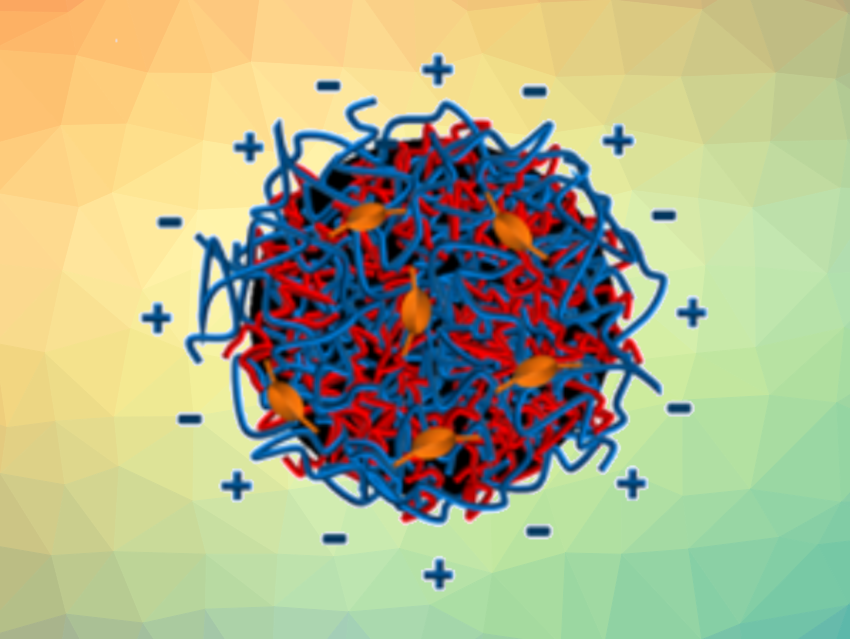Non-traditional intrinsic luminescence is an emissive phenomenon occurring when typically non-emissive, electron-rich, heteroatomic, sub-luminophoric units are arranged in specific molecular architectures, chemically crosslinked structures, or confined states. These configurations restrict intramolecular and intermolecular mobility, leading to unique emissive assemblies. Unlike traditional aromatic fluorophores, these materials usually exhibit blue-shifted fluorescence profiles, primarily emitting in the blue region.
Pei Li, The Hong Kong Polytechnic University, Kowloon, Hong Kong, China, and colleagues have synthesized non-conjugated polymer nanoparticles with green fluorescence in an aqueous medium via in-situ electrostatic complexation between a negatively charged polymer, generated via free-radical polymerization, and positively charged polyethyleneimine (PEI) to form poly-ionic complexes (pictured schematically). Polyethyleneimine (PEI) was first crosslinked with glutaraldehyde (GA), and then an acrylic acid-based monomer underwent in-situ polymerization. The nanoparticles were then formed through self-assembly.
The glutaraldehyde-crosslinked polyethyleneimine/poly(methacrylic acid) (gPEI/PMAA) nanoparticles formed through strong electrostatic interaction are much more compact than those created by crosslinking, resulting in red-shifted photoluminescence due to enhanced electronic delocalization. The resulting non-conjugated polymeric nanoparticles with distinctive green fluorescence characteristics have potential for diverse applications including in light-emitting diodes, optoelectronic devices, bioimaging, and fluorescence-based sensing systems.
- Aqueous Synthesis of Green Fluorescence Non‐Conjugated Polymer Nanoparticles by in situ Formation of Poly‐ionic Complexes,
Pei Li, Ho Chun Wong, Leong Ting Ng, Ying Kau Lam,
ChemPhotoChem 2024.
https://doi.org/10.1002/cptc.202400149



